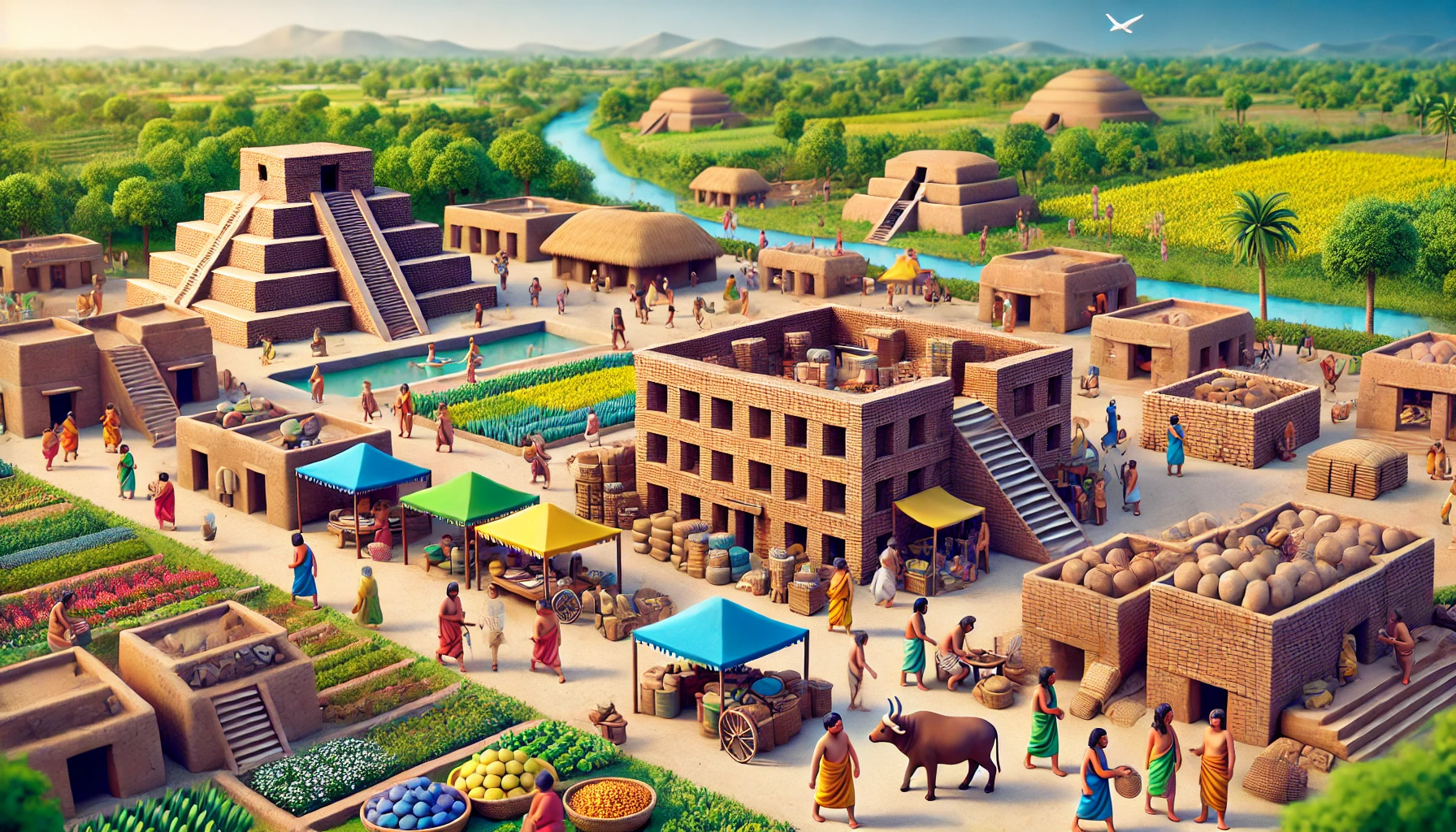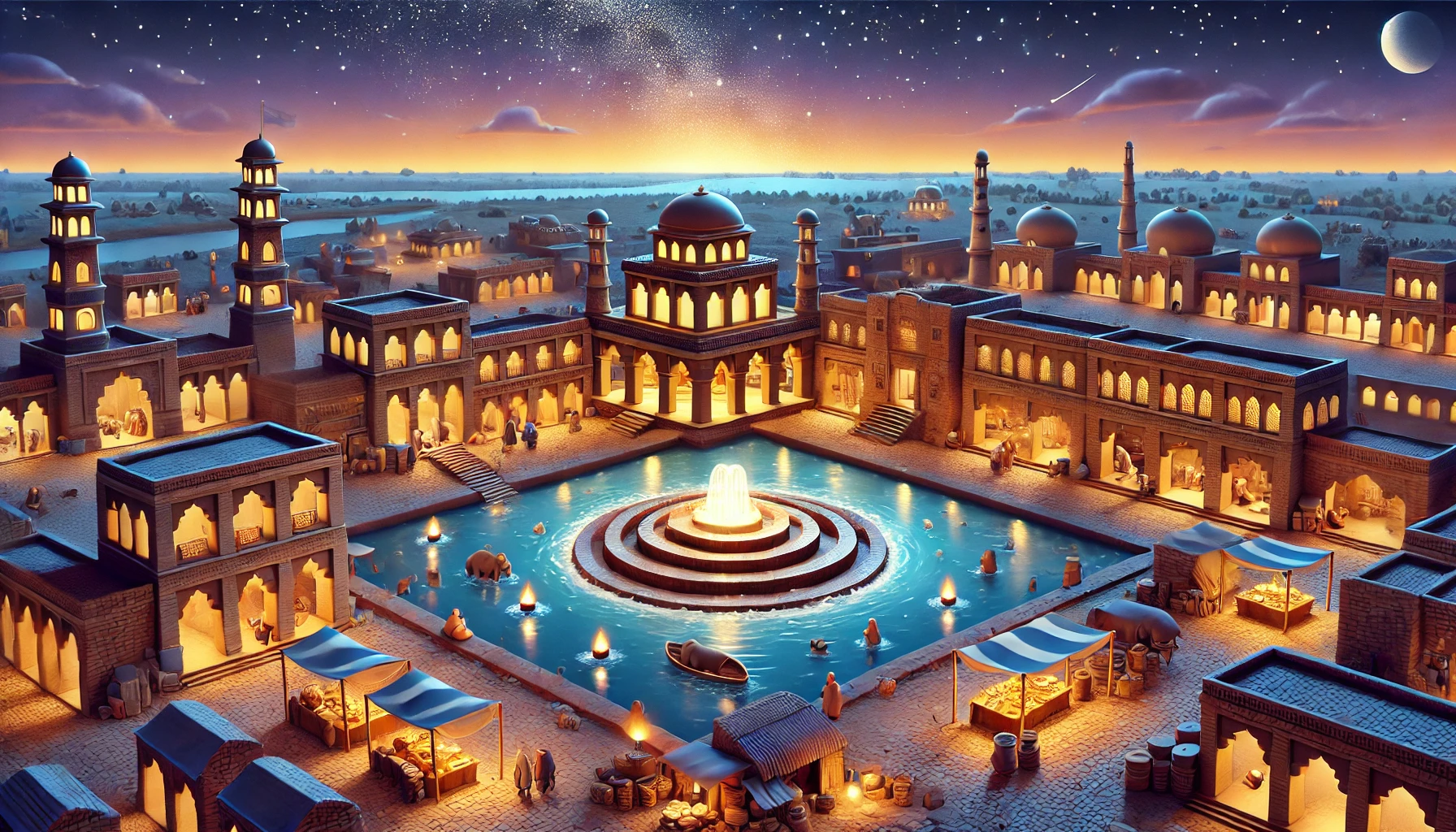
Over 4,500 years ago, along the fertile floodplains of the Indus River, one of humanity’s first great civilizations arose. The Indus Valley Civilization (IVC), also called the Harappan Civilization after its first discovered city, was an urban marvel of its time. This was a civilization of planners, builders, traders, and thinkers whose achievements in city planning, sanitation, trade, and craftsmanship set them apart from their contemporaries.
Origins of the Indus Valley Civilization
Geography and Natural Setting
The Indus Valley Civilization grew along the Indus River and its tributaries in present-day Pakistan and northwest India. The fertile plains created by the river’s annual flooding made agriculture highly productive. The civilization also benefited from:
- Natural Boundaries: The Himalayas and the Thar Desert offered protection.
- Resources: Rich deposits of minerals like copper and semi-precious stones.
- Waterways: Rivers served as transportation routes for trade and communication.
Neolithic Foundations
Before the emergence of cities, early farming communities thrived in the region. Sites like Mehrgarh, dating to around 7000 BCE, provide evidence of the transition from hunting-gathering to settled farming. Archaeological finds at Mehrgarh include:
- Domestication of wheat, barley, and animals like cattle.
- Early forms of pottery and tools.
- Burial practices indicating a structured society.
The Rise of Planned Cities

Urban Planning and Architecture
The cities of the Indus Valley, including Harappa, Mohenjo-Daro, and Dholavira, were among the earliest examples of urban planning. Their layout demonstrates a high degree of organization:
- Grid System: Streets intersected at right angles, dividing the city into blocks.
- Division of Space:
- Citadel: A raised, fortified area that housed public and religious buildings.
- Lower City: Residential and commercial areas for ordinary citizens.
- Standardized Bricks: Uniform bricks were used, reflecting central planning.
Sanitation and Water Management
The Indus Valley people developed advanced drainage and water systems:
- Covered Drains: Underground drains ran along streets, connected to homes.
- Wells: Cities had public and private wells for fresh water.
- Bathing Areas: Almost every home had a bathroom, and Mohenjo-Daro had the famous "Great Bath," a large, waterproof pool likely used for ritualistic purposes.
Residential Areas
Houses were built using mud bricks and featured courtyards, multiple rooms, and access to public amenities. This indicates a society that valued privacy and hygiene.
Society and Daily Life

Social Structure
The Indus Valley Civilization appears to have been relatively egalitarian compared to its contemporaries. Evidence suggests:
- No grand palaces or temples, indicating that rulers and elites may have lived modestly.
- Public works, such as drainage systems, suggest community-oriented governance.
Occupations and Professions
People engaged in various occupations:
- Farmers: Grew wheat, barley, peas, and cotton (the earliest known use of cotton in the world).
- Artisans: Created tools, pottery, jewelry, and sculptures.
- Merchants: Traded goods within the civilization and with distant lands like Mesopotamia.
Clothing and Adornments
Men and women dressed in simple cotton garments, often adorned with jewelry made of gold, silver, and semi-precious stones like carnelian and agate. Beads, bangles, and amulets were popular.
Food and Cuisine
The diet of the Indus people included:
- Staples: Wheat, barley, lentils, and millet.
- Fruits: Dates, melons, and pomegranates.
- Proteins: Fish, poultry, and meat from cattle, sheep, and goats.
Art, Craftsmanship, and Technology
Pottery and Sculpture
Indus pottery was functional and decorative, featuring geometric and animal motifs. Sculptures included:
- Terracotta figurines, often of women, possibly linked to fertility worship.
- Seals engraved with animals and symbols.
Metallurgy and Tools
The Indus people were skilled in metallurgy, crafting tools, weapons, and ornaments from copper, bronze, and gold. Their technology included:
- Advanced bead-making techniques.
- Tools for farming and construction.
Writing and Seals
The undeciphered Indus script remains one of the greatest mysteries of this civilization. Found on seals, pottery, and tablets, the script consists of symbols and pictograms, often alongside images of animals. Seals were likely used for trade or administrative purposes.
Religion and Beliefs

Religious Practices
The absence of grand temples suggests that religion may have been practiced at home or in communal spaces. Common religious elements include:
- Mother Goddess Figurines: Represent fertility and prosperity.
- Animal Worship: Sacred animals, such as bulls, may have played a role in religious rituals.
- Great Bath: Could have been used for purification rituals.
Sacred Symbols
Symbols like the "swastika," used for good fortune, and depictions of yogic postures suggest connections to later Hindu practices.
Trade and Economy
Internal and External Trade
Trade was a cornerstone of the Indus economy. Goods were exchanged both locally and with distant regions like Mesopotamia, Central Asia, and the Arabian Peninsula.
Key Trade Goods
- Exports: Cotton, beads, pottery, and metals.
- Imports: Lapis lazuli from Afghanistan, shells from coastal areas, and tin for making bronze.
Transportation
- Riverboats and carts with solid wheels were used to move goods.
- Cities like Lothal had dockyards, indicating maritime trade.
Decline and Fall of the Civilization

Theories of Decline
The Indus Valley Civilization began to decline around 1900 BCE. The reasons remain unclear, but possible explanations include:
- Climate Change: Shifting monsoon patterns may have led to droughts.
- River Changes: The drying up of the Saraswati River disrupted agriculture and trade.
- Invasions: The arrival of Indo-Aryans may have contributed to the collapse.
Gradual Dispersal
Unlike sudden collapses seen in other civilizations, the Indus decline was gradual. Many people migrated to smaller villages or assimilated into emerging cultures.

